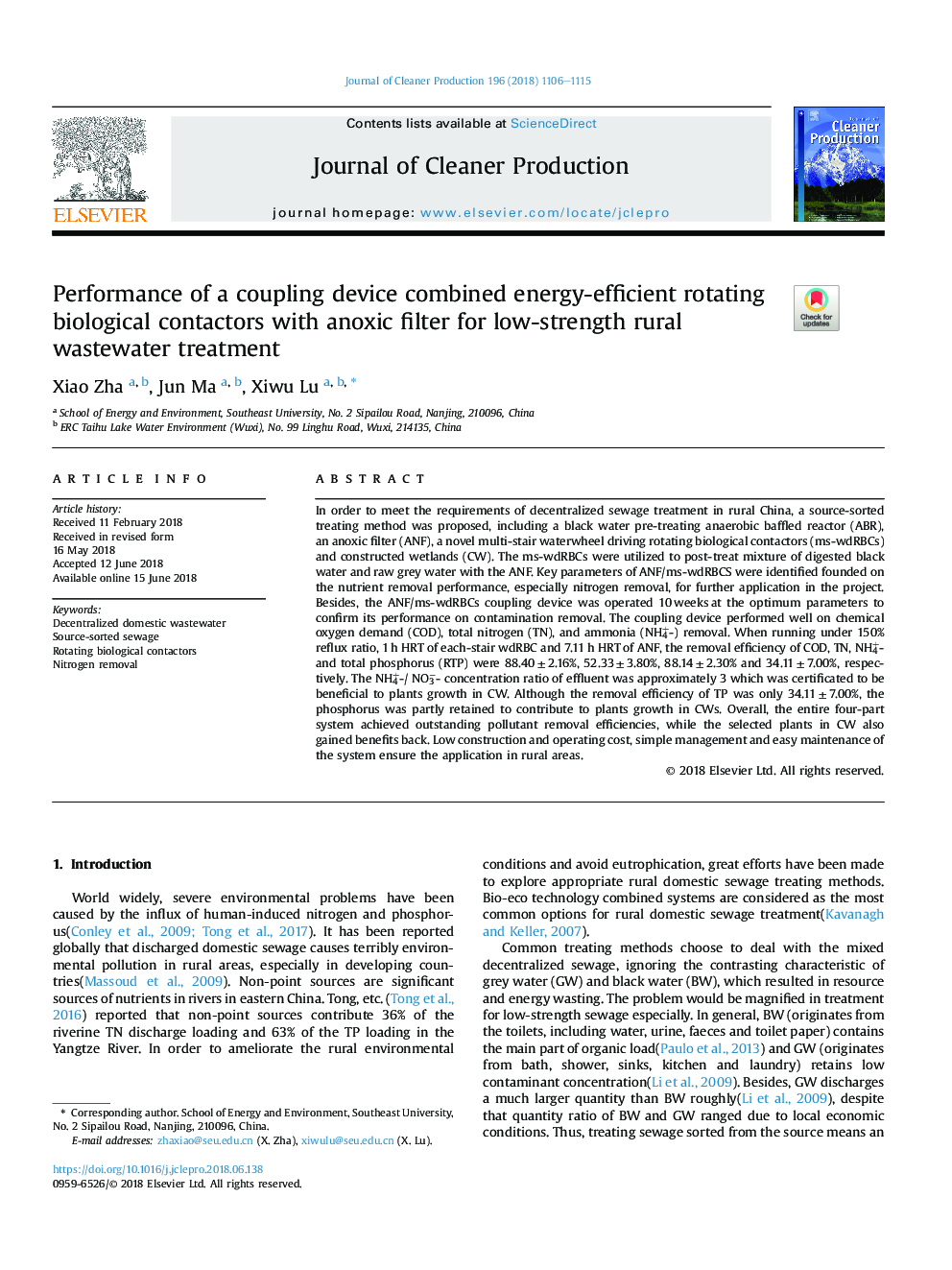| Article ID | Journal | Published Year | Pages | File Type |
|---|---|---|---|---|
| 8094088 | Journal of Cleaner Production | 2018 | 10 Pages |
Abstract
In order to meet the requirements of decentralized sewage treatment in rural China, a source-sorted treating method was proposed, including a black water pre-treating anaerobic baffled reactor (ABR), an anoxic filter (ANF), a novel multi-stair waterwheel driving rotating biological contactors (ms-wdRBCs) and constructed wetlands (CW). The ms-wdRBCs were utilized to post-treat mixture of digested black water and raw grey water with the ANF. Key parameters of ANF/ms-wdRBCS were identified founded on the nutrient removal performance, especially nitrogen removal, for further application in the project. Besides, the ANF/ms-wdRBCs coupling device was operated 10â¯weeksâ¯at the optimum parameters to confirm its performance on contamination removal. The coupling device performed well on chemical oxygen demand (COD), total nitrogen (TN), and ammonia (NH4+-) removal. When running under 150% reflux ratio, 1â¯h HRT of each-stair wdRBC and 7.11â¯h HRT of ANF, the removal efficiency of COD, TN, NH4+- and total phosphorus (RTP) were 88.40â¯Â±â¯2.16%, 52.33â¯Â±â¯3.80%, 88.14â¯Â±â¯2.30% and 34.11â¯Â±â¯7.00%, respectively. The NH4+-/ NO3â- concentration ratio of effluent was approximately 3 which was certificated to be beneficial to plants growth in CW. Although the removal efficiency of TP was only 34.11â¯Â±â¯7.00%, the phosphorus was partly retained to contribute to plants growth in CWs. Overall, the entire four-part system achieved outstanding pollutant removal efficiencies, while the selected plants in CW also gained benefits back. Low construction and operating cost, simple management and easy maintenance of the system ensure the application in rural areas.
Related Topics
Physical Sciences and Engineering
Energy
Renewable Energy, Sustainability and the Environment
Authors
Xiao Zha, Jun Ma, Xiwu Lu,
